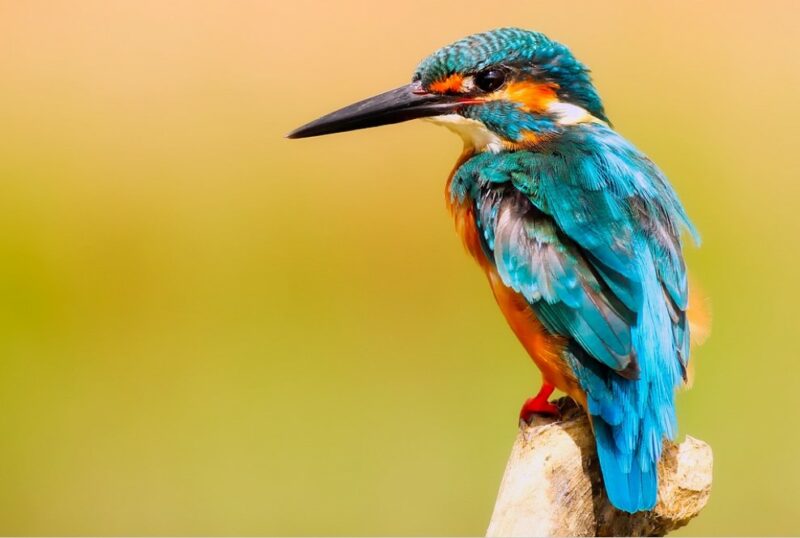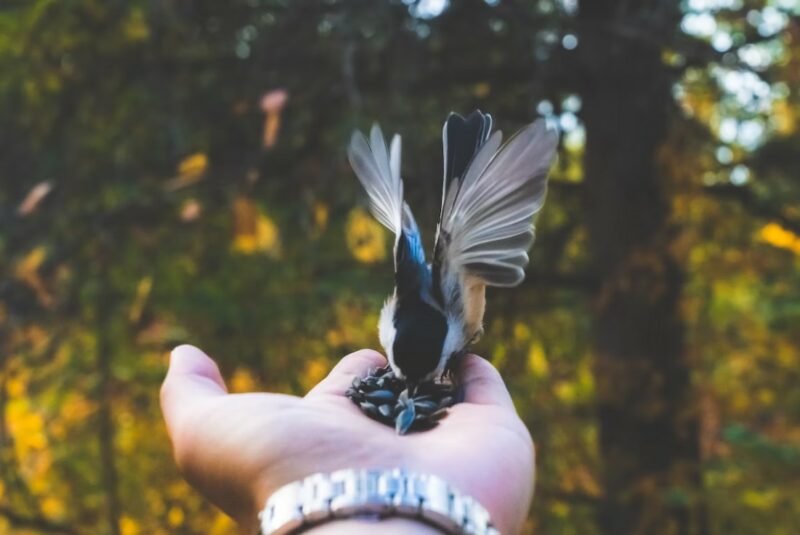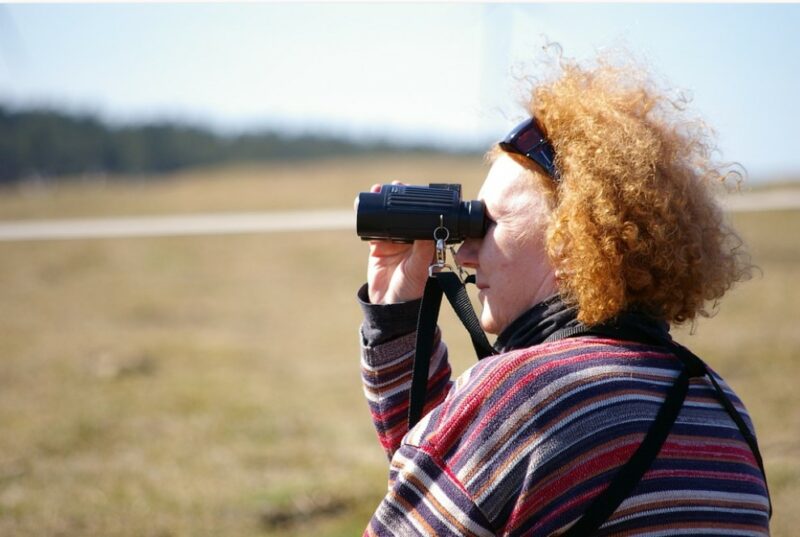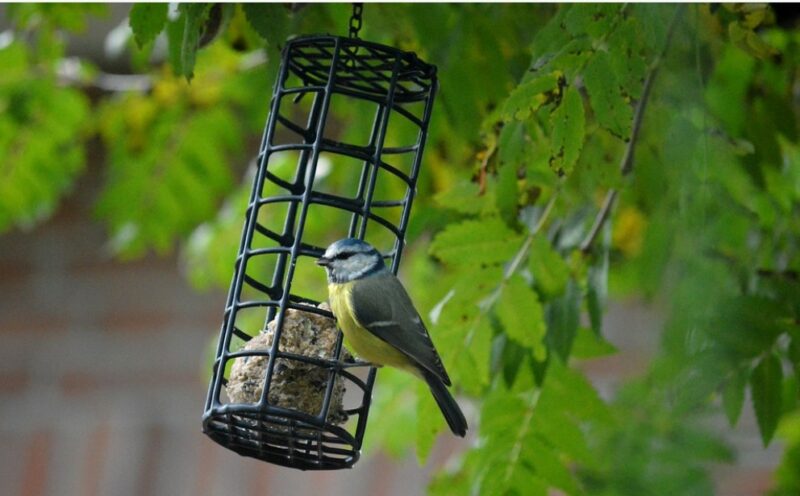Did you know that there are over 10,000 species of birds in the world? Bird watching has been a popular hobby for decades. Birds are magnificent creatures that are fascinating to watch. The main appeal to bird watching is that it is inclusive and accessible for everyone. To begin your bird-watching journey, below we have outlined some bird-watching tips. These tips ensure you get the most out of your bird-watching experience.
Quick Navigation
ToggleWhat is Bird Watching
Bird watching is a hobby and activity where birds are observed and listened to for recreational purposes. This is the most basic definition of bird watching. Bird watchers do not simply just look at birds. Bird watchers learn how to distinguish different birds from one another, and learn their behaviors, and their calls.

Some individuals will take this hobby a few steps further by also documenting all their observations, identifying the birds they see, and also recording all their findings with other bird-watching enthusiasts.
Basic Bird-Watching Techniques
Regardless of where you are in the world, you should be able to step outside and spot a bird. This is easy to do, however, you may only catch a glimpse of the bird and fail to notice some important characteristics of the bird. To refine the skill of bird watching, avid bird watchers have adopted the following techniques. These bird-watching techniques make it possible to find and get a better look at birds.
Stay Quiet
Loud noises will startle birds and cause them to flee for cover. Birds have impeccable hearing, making it almost impossible to sneak up on a bird. By remaining still and quiet, birds will not perceive you as a threat. By keeping quiet you have a better chance of getting a good look at the bird and also getting to observe its behavior.
Record your Bird Observations
Dedicate a notebook to all the observations you make when bird watching. Record the date, time of day, and location first and foremost. Then write down the birds you see, perhaps what they are doing – collecting debris for their nests, building a nest, courting, or feeding. Record all birds you see and their behavior.
You will then be able to use your notebook to educate yourself on birds and their behavior. Recording bird observations are part of the bird-watching experience. It is a collection of sightings. Just as some people collect coins, others try to collect as much information on different birds as possible. Starting this as soon as you begin your bird-watching journey will ensure that you keep up this habit and never forget a bird-watching experience.
Make Use of Apps
Technology has made it easier than ever for bird-watching enthusiasts. Smartphones are now able to download a selection of bird-watching apps that make the process of bird-watching easier. If you choose to make use of bird-watching apps you will have immediate access to a vast amount of information, from migratory maps to bird calls.
Leading Bird – Watching Apps
The following are some of the most popular apps used by bird watchers. Download some of these apps to take with you on your next outing.
- BirdsEye
This app has a collection of over 1000 birds. You can select a specific bird and the app will tell you where you can find this bird. You can also enter your location and get a list of birds that are found in your area. The app uses images and bird calls to help you identify a bird you spot.
- Merlin
This app is fantastic for beginner bird watchers. If you are not fully confident to identify birds on your own then this is the app for you. You merely ask the app a couple of questions about the bird you have spotted. The app will lead you through a series of questions about the bird to help narrow down the possibilities and help you successfully identify the bird. This app helps you zero in on the correct bird with the help of images, videos, and bird calls.
- National Geographic Birding App
This app allows you to search by location, color, and size. The app has a huge database of bird images, calls, and maps. Simply use the search bar to fill in your details about the color, size, and location of the bird you have spotted. The app will generate a list of possible birds that you can then scroll through to find your bird.
Advantages Of Birding Apps
- Create a list of birds as you spot them
- Can you play a variety of bird calls, making it easier to identify birds.
- Compare two different bird species side by side to spot the differences
- It is easier and faster to search for and find information on a specific bird.
- Access to thousands of professional images of birds.
- Can use the photo identification function. You simply take a picture of a bird and upload it to the app and the app will identify the bird for you.
- Apps offer detailed maps of the migration pattern of birds and where you can find them.
- You get a detailed description of birds, such as their song and calls, and measurements of length and wingspan for every specie of bird.
Field Guides
Field guides are an important piece of bird-watching gear. For a beginner, bird watchers’ field guides can offer information on the identification of birds; facts about different birds’ natural history; tips on how to find a specific species. Field guides are available for every major bird group. You can choose to buy a few field guides about birds that are indigenous to your neighborhood to start and then add to your collection as you expand your bird-watching field.
Get to know your regulars
As a beginner, it is easier to start with what you have. Set up a garden chair in your garden or neighborhood park and observe the birds that are indigenous to your area. Get to know the birds that you see regularly, observe their behavior, and how they interact with not only each other but also other species of birds. Once you feel that you have a good understanding of the birds that you see regularly branch out to other neighborhoods and parks.

Time of Day
The early bird catches the worm. This cliche is especially relevant to bird watching. The best time to go out and bird-watching is between dawn and 11 am. By late morning birds will find a shady spot to rest. It is more difficult to spot birds once they move up into the canopy of trees. You might also get lucky and spot birds in the late afternoon before sunset as birds make their way back to their nests for the evening.
Be Patient
Patience goes a long way with bird watching. It requires that you remain incredibly quiet and still for long periods as any sudden movements will scare a bird away. It can be very peaceful merely sitting still and watching a bird in its natural habitat. The more patient you are the more likely you will be rewarded by spotting a rare and beautiful bird.
Practice
Practice makes perfect. Just like any new hobby the more you practice the better you will get. Bird watching is no exception. The more you practice your bird-watching skills the better you will get at spotting a bird that seems camouflaged. You will also get better at identifying birds by their call or by their feathers. Bird watching is a hobby that you can turn into a skill with the right amount of practice.
Bird Watching Gear
You do not need a whole lot when you begin bird-watching. You already have your eyes which is the first step to seeing birds. Some other bits of equipment and clothing will make your bird-watching experience more comfortable and more successful.
Binoculars
Birding binoculars are the most basic tool you need to enter the world of bird watching. Opt for full-sized binoculars, they have more power and provide more light than small binoculars.

Powerful binoculars will help you spot a small bird in a tall tree. Your binoculars should have fully coated lenses and a focus knob. The better your binoculars are, the better your bird-watching experience will be. Think of your binoculars as your second eyes, they are going to help you see further and clearer than you can with the naked eye.
Bird Watching Clothing
There are a couple of factors to consider when choosing your bird-watching attire. You want to remain camouflaged so as not to scare away birds. Choose colors that are neutral and natural. Many bird watchers wear subtle shades of gray, brown, and green clothing.
Choose comfortable clothing as you will be sitting out in the field for long periods and will want to wear clothing that does not make you uncomfortable. Lightweight tops are great at keeping you warm but not making you hot. For a morning out in the sun be sure to also wear a hat to protect your face from the sun. Hats also help camouflage your hair which helps you blend into the natural environment around you.
Choose function over fashion. Cargo pants with deep pockets are useful for storing field guides, notepads, and pencils. Wear shoes with solid ankle support as you might find yourself walking on trail paths and want to avoid getting a sprained ankle.
Additional Bird-Watching Materials
Do not forget to bring with you a pen and notepad to record all your observations with. You will also want to bring a camera along to take pictures for your records. Pack with you some water as a long morning out bird watching in the sun will make you thirsty. Protect your skin and remember to apply sunscreen before you head out into the sun.
Where to start bird watching
As we know birds are found almost everywhere. There are many places that you can choose to go to begin your journey as a bird watcher. Start bird-watching in areas that you often visit and then increase your scope to other areas.
Backyard
Backyard bird watching is also known as “armchair birding.” You can head into your backyard or garden and passively watch the birds fly past or sit to rest on the trees around you. Encourage birds to visit your backyard by installing bird feeders and bird baths.

Feeders will attract more birds to your backyard and you will be able to observe them bathing, feeding, and interacting with one another. Remember that you are limited to what species of birds you will see in your backyard. Once you feel more confident in spotting birds you can go out to new locations and spot the birds that frequent those places.
Best Places for Bird Watching
The best place for bird watching is to fully immerse yourself in a bird’s natural habitat. Leave the noisy suburbs and cities and head out to a local nature reserve or park. Here you will find birds undisturbed. National parks across the world are home to thousands of bird species. Some of them are rare and others are more common.
Some of the best bird-watching locations in the world could require you to travel.
Below are some international locations that are renowned for bird-watching:
- Manú National Park, Peru – South America
- Sinharaja Forest, Sri Lanka – Asia
- Bwindi Impenetrable Forest, Uganda – East Africa
- Sierra Nevada de Santa Marta, Colombia – South America
- Doñana National Park, Spain – Europe
- Bangweulu Swamps, Zambia – Southern Africa
- Caprivi Strip, Namibia – Southern Africa
Join a Bird Watching Society
The best way to learn as a beginner is to ask the pros. Bird-watching societies are filled with novices and experts alike. Bird-watching societies are a great network of people passionate about birds. You will be able to ask questions and get more information about birds. As a beginner, you will have the opportunity to learn from expert birders.
Being part of a bird society is also a great way to stay up-to-date with the latest bird sightings and rarities in your area.
Bird Societies often have newsletters/ emails that keep you informed with local birding news as well as possible upcoming events.
To find a bird-watching community near you it is best to search for forums and groups online first. Check online, a simple google search with your location included will give you a list of different bird clubs and societies in your area for you to register with and join. Some clubs ask for a membership fee. This fee is often used to support national parks and as a member, you will avoid having to pay park fees when going bird-watching.
Facebook is also a great means of connecting with other bird watchers. There are many bird clubs or groups that are easy to join on Facebook. These groups will offer information about birds as well as host bird-watching events that you can join.
Networking with other birders is easy. Next time you take a walk into a park see if anyone around you is also bird watching. If so, ask them if they are part of a bird society and if so how could you go about joining? People that share the same hobby tend to be enthusiastic about sharing their knowledge on that subject and will be happy to assist you.
Conclusion
Bird watching is a very rewarding hobby because it is complex and requires attention and the ability to learn and retain new knowledge. There is never a shortage of birds to see. They are all around us, all we need to do is to pay attention to be included in their world. Bird watching opens up a world that connects us back to nature.

